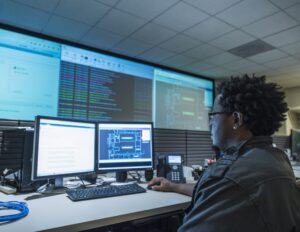All battery types, by definition, store chemical energy, so every battery if mishandled (e.g., thrown in a fire) or overcharged has the potential for being a hazard by releasing hazardous materials or igniting a fire. Lithium-ion batteries have been thought to be more volatile due to reported cases of fire and due to their much higher specific energy combined with a greater sensitivity to being over charged. Improperly managed, a lithium ion battery will reach a “thermal runaway” state more easily as it has a lower cell resistance and higher energy storage capacity than a lead acid battery.
However, much progress has been made over the years making them very safe and much more comparable safety-wise to other commonly used battery types. Chemistry changes and cell packaging improvements have made them more stable. Manufacturing processes are mature and the materials used are more durable. Battery management schemes are well tested and field proven to keep lithium-ion batteries from being over charged or over heated. The prolific use of lithium batteries in hundreds of millions of portable electronics, smart phones, and electric vehicles is positive evidence for their level of safety.
Because lithium-ion battery systems are much more sensitive to how they are charged and discharged, all include a battery management system, or BMS. Microprocessors, sensors, switches, and their related circuits make up this system. It constantly monitors at the cell level battery temperature, charge level, and charge rate to protect against short circuits and overcharging. The system is also instrumental in protecting the cells from damage by preventing the voltage from going too low on discharge. The BMS provides the UPS and user with accurate information about battery status, health, and available runtime. Although the BMS makes lithium ion battery systems much safer, they do come at a cost. They add cost to the solution and drain energy from the batteries eliminating or greatly reducing whatever efficiency advantages they offer compared to lead acid.
As to whether the battery materials are hazardous, the US Government considers them not to be hazardous and, therefore, is safe for disposal in landfills. Li-ion batteries do not contain mercury, lead, cadmium, or any other material deemed to be hazardous. Of course, this does not mean that recycling, or a lack of recycling, does not have an environmental impact.
I’ve written a white paper on the FAQs for Using Lithium-Ion Batteries with a UPS you can view here.



Conversation
Does lithium ion batteries produce hydrogen like acid batteries?
Hi Abdulsalam, thanks for your comment…No hydrogen is released during normal use.
Lithium batteries are quite safe, yes. But are they not also dialectically considered a Hazardous Good?